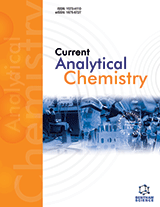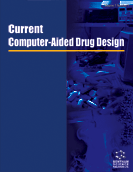Abstract
High throughout screening is an approach based on the concept which assumes that when sufficiently large library of compounds are tested, the chance of discovering a new active compound is increased. In order to meet this expectation, proper testing criteria need to be devised. Those criteria should be related to the fate of a compound in the organism to have any predictive power. Not long ago, the main criteria were based exclusively on parameters defined by the maximum activity (QSAR). In this system, the activity criteria have not been included therefore the compound ability to reach the target is not accounted for. Considering that, the construction of yet another set of parameters has been initiated (QSPR). The parameters are in fact semi-empirical numbers which need to be tested on real, physical models. Whereas the activity tests are straightforward, the pharmacokinetic ones are difficult and controversial. One such parameter describes the critical property of an active compound, namely its ability to cross biological membranes. This review describes new concepts in the determination of the permeability coefficient with the help of methods which are based on liposome biosensors. Two methods using fluorescence probes incorporated in the lipid bilayer of liposome are described in detail and compared to other currently available techniques.
Keywords: Supramolecular aggregate based biosensor, fluorescence, membrane permeability, membrane surface adsorption, HTS
Combinatorial Chemistry & High Throughput Screening
Title: Application of Liposome Based Sensors in High-Throughput Screening Systems
Volume: 10 Issue: 6
Author(s): Magda Przybylo, Tomasz Borowik and Marek Langner
Affiliation:
Keywords: Supramolecular aggregate based biosensor, fluorescence, membrane permeability, membrane surface adsorption, HTS
Abstract: High throughout screening is an approach based on the concept which assumes that when sufficiently large library of compounds are tested, the chance of discovering a new active compound is increased. In order to meet this expectation, proper testing criteria need to be devised. Those criteria should be related to the fate of a compound in the organism to have any predictive power. Not long ago, the main criteria were based exclusively on parameters defined by the maximum activity (QSAR). In this system, the activity criteria have not been included therefore the compound ability to reach the target is not accounted for. Considering that, the construction of yet another set of parameters has been initiated (QSPR). The parameters are in fact semi-empirical numbers which need to be tested on real, physical models. Whereas the activity tests are straightforward, the pharmacokinetic ones are difficult and controversial. One such parameter describes the critical property of an active compound, namely its ability to cross biological membranes. This review describes new concepts in the determination of the permeability coefficient with the help of methods which are based on liposome biosensors. Two methods using fluorescence probes incorporated in the lipid bilayer of liposome are described in detail and compared to other currently available techniques.
Export Options
About this article
Cite this article as:
Przybylo Magda, Borowik Tomasz and Langner Marek, Application of Liposome Based Sensors in High-Throughput Screening Systems, Combinatorial Chemistry & High Throughput Screening 2007; 10 (6) . https://dx.doi.org/10.2174/138620707781996439
| DOI https://dx.doi.org/10.2174/138620707781996439 |
Print ISSN 1386-2073 |
| Publisher Name Bentham Science Publisher |
Online ISSN 1875-5402 |
 7
7
- Author Guidelines
- Bentham Author Support Services (BASS)
- Graphical Abstracts
- Fabricating and Stating False Information
- Research Misconduct
- Post Publication Discussions and Corrections
- Publishing Ethics and Rectitude
- Increase Visibility of Your Article
- Archiving Policies
- Peer Review Workflow
- Order Your Article Before Print
- Promote Your Article
- Manuscript Transfer Facility
- Editorial Policies
- Allegations from Whistleblowers


























